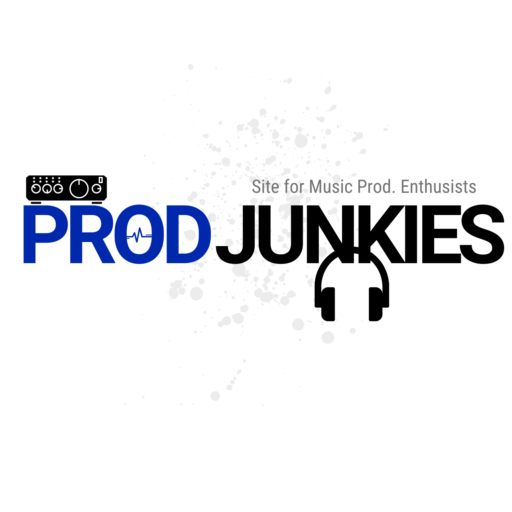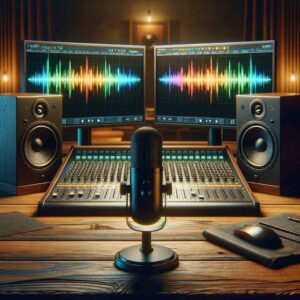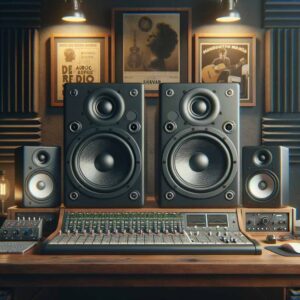What should you look for when buying a MIDI controller?
Here’s exactly what to look for in your search.
Your MIDI keyboard should have enough keys to fit your playing style.
Are you looking to record complex melodies or chords?
Then you may want to consider a MIDI keyboard with 49 or more keys.
It’s also worth considering other features such as the type of keys – synth-action, semi-weighted, or hammer action.
What features would help you streamline your production workflow – a built-in arpeggiator, drum pads, knobs, and faders?
Would you like the ability to add expression to your notes while playing?
If so, consider investing in a MIDI controller with Aftertouch.
Lastly, what type of connectors do you need – USB, 5-pin MIDI, pedal inputs, CV/gate ports?
We’ll explore further these MIDI keyboard elements in this guide.
By the end, you’ll have a deep understanding of what to look for in your search.
What to Look for When Buying a MIDI Keyboard
Key Count
- Primary Options: 25, 49, 61, or 88 Keys
- Secondary Options: 32, 37, or 76 Keys
The first factor worth considering when buying a MIDI controller is how many keys you need.
A 25-key controller is compact and portable. But it’ll limit your ability to play compositions with two hands.
Conversely, an 88-key model will take up more space in your studio. Plus, it’s more difficult to transport.
However, it gives you the feel of playing piano, allowing you to record more complex chords and melodies.
Who is a 25-key MIDI controller best for?
- Beginner producers
- Non-keyboardists
- Producers who tend to record simple melodies and chord progressions
- Traveling producers
- Trap and EDM producers
Who is an 88-key MIDI controller best for?
- Keyboardists/Pianists
- Producers who are learning to play piano
- Jazz, Gospel, RnB, Pop, and Orchestral producers
- Producers who score films using complex chord progressions and harmonies
There are also 49 and 61-key models which offer a middle ground between compact 25-key and full-size 88-key MIDI keyboards.
A 49-key MIDI keyboard has a wider note range – 4 octaves – than a 25-key model, but it’s still relatively compact.
Similarly, a 61-key MIDI keyboard offers 5 octaves which are ideal for two-handed playing but more compact than a 7-octave 88-key model.
49 and 61-key MIDI keyboards are great portable options for creating complex chord progressions.
Key Resistance
- Synth-Action Keys – Least Resistance
- Semi-Weighted Keys
- Hammer Action Keys – Most Resistance
You’ll frequently see the words synth-action, semi-weighted, and hammer action during your MIDI controller search.
These words refer to how much resistance a keyboard’s keys present while you’re playing.
Hammer action keys mimic piano keys.
They simulate the resistance you’d feel from the hammers inside an acoustic piano.
You’ll feel the most resistance from these keys, so you’ll have to apply more pressure to trigger each note.
Conversely, synth-action keys have the least resistance.
These keys feel spring-like which makes them ideal for playing synth and percussion sounds.
Lastly, semi-weighted keys are the middle ground between synth action and hammer action.
They offer some resistance but not as much as a piano.
We recommend synth-action MIDI keyboards for beginners and non-piano players.
They’re cheaper and easier to play if you have no piano experience.
They also make it easier to record bass riffs, synth melodies, and percussion sounds since their keys offer very little resistance.
Hammer action MIDI keyboards are the better choice for experienced piano players who prefer the feel and response of a traditional acoustic piano.
Semi-weighted keys are ideal for players who may not yet have enough finger strength or technique to handle the heavier touch of a fully weighted-keyboard.
They offer a more realistic playing feel than synth-action keys and they’re more affordable than hammer action models.
Features
- Knobs and Faders
- Drum Pads
- Automapping
- Chord and Scale Functions
Here’s an overview of the most common features you’ll find on a MIDI controller
Knobs and Faders
With a set of knobs and faders, you’ll have more control over your DAW and virtual instruments.
It’s like having a mixer and keyboard in one unit.
You’ll be able to adjust levels and change sound parameters in real time for more expressive performances.
You can assign the knobs and faders on your unit to different functions within your software, such as volume, panning, filters, and effects.
This allows you to make changes on the fly, without having to stop playing or reach for your mouse or trackpad.
Additionally, many MIDI keyboards have programmable presets.
Using presets allows you to save your settings and recall them later during a performance or recording session.
Drum Pads
A set of drum pads can help you add creativity to your drum patterns.
They’re an intuitive way to create rhythms as opposed to clicking notes in your DAW.
With a set of drum pads on your MIDI keyboard, you can input and edit drum patterns, triggering different sounds with varying degrees of velocity and pressure.
Having this ability can help you add dynamics and humanization to your drum programming -two elements that help you create more organic and expressive grooves.
Additionally, you can also use drum pads to trigger samples and loops to incorporate other sounds and textures into your beats.
Some MIDI keyboards also come with built-in drum sequencers and arpeggiators. These tools can help you create complex patterns and rhythms with less effort.
DAW Compatibility and Automapping
Having a MIDI controller that can auto-map its knobs and faders to parameters in your DAW is a major time saver.
Without auto-mapping, you’ll have to manually assign each control on your device.
Ideally, your MIDI controller should sync with your DAW right out of the box.
For instance, Novation’s Launchkey MKII models seamlessly integrate with Ableton Live, Logic Pro, and FL Studio.
With these DAWs, you can start using a Launchkey controller immediately without spending time manually assigning controls or creating custom mappings.
In summary, automatic mapping helps you streamline your workflow, allowing you to focus on making music rather than configuring settings.
When shopping for a MIDI controller, it’s important to check if a unit is compatible with your DAW.
It can save you a lot of time and make your workflow more efficient.
Chord and Scale Functions
Chord and Scale mode are two different functions that you can use to play complex chords or scales
Here’s a brief overview of each:
Chord Mode
In Chord mode, you can select a specific chord and play a key within it.
When you press a single key in the chord you select, your keyboard will play the other notes that form that chord.
Some MIDI keyboards let you select different chord types, such as major, minor, augmented, or diminished.
Others even allow you to program custom chords.
Chord mode can be useful for musicians who want to play complex chords but don’t have the finger dexterity to do so.
It can also be useful for composers who want to quickly try out different chord progressions.
Scale Mode
In Scale mode, the keyboard is set to play notes only within a specific scale.
Scale mode can be useful for musicians who want to play within a specific scale but may not be familiar with the notes within it.
Inputs and Outputs
- MIDI I/O
- USB Port
- Pedal Inputs
- CV/Gate I/O
The inputs and outputs that come with MIDI keyboards can vary depending on the model and manufacturer.
However, here are some of the most common inputs and outputs that you can expect to find on a MIDI keyboard:
MIDI IN and OUT
Most MIDI keyboards will have at least one MIDI IN and one MIDI OUT port.
These ports are used to send and receive MIDI data to and from other MIDI devices, such as synthesizers, drum machines, and computers.
USB Port
Many MIDI keyboards now come equipped with a USB port, which can be used to connect the keyboard directly to a computer.
This allows for MIDI data to be sent and received over a USB connection, without the need for a separate MIDI interface.
Pedal Inputs
Some MIDI keyboards come equipped with one or more pedal inputs.
These can be used to connect sustain pedals, expression pedals, or other types of foot controllers.
CV/Gate I/O
CV/Gate inputs and outputs allow your MIDI board to communicate with synthesizers and sequencers.
Takeaway: Choosing the Best MIDI Keyboard
Choosing the best MIDI keyboard for music production requires careful consideration of several factors.
The size, number of keys, and types of controls are essential in ensuring that the keyboard meets your specific needs and preferences.
The connectivity options, including USB, MIDI, and CV/Gate ports, are also important to consider as they determine if your model is compatible with other devices in your music production setup.
Finally, the budget is a crucial factor as it determines the quality and functionality of the MIDI keyboard that you can afford.
By considering all these factors, you can find the best MIDI keyboard for your production style.








